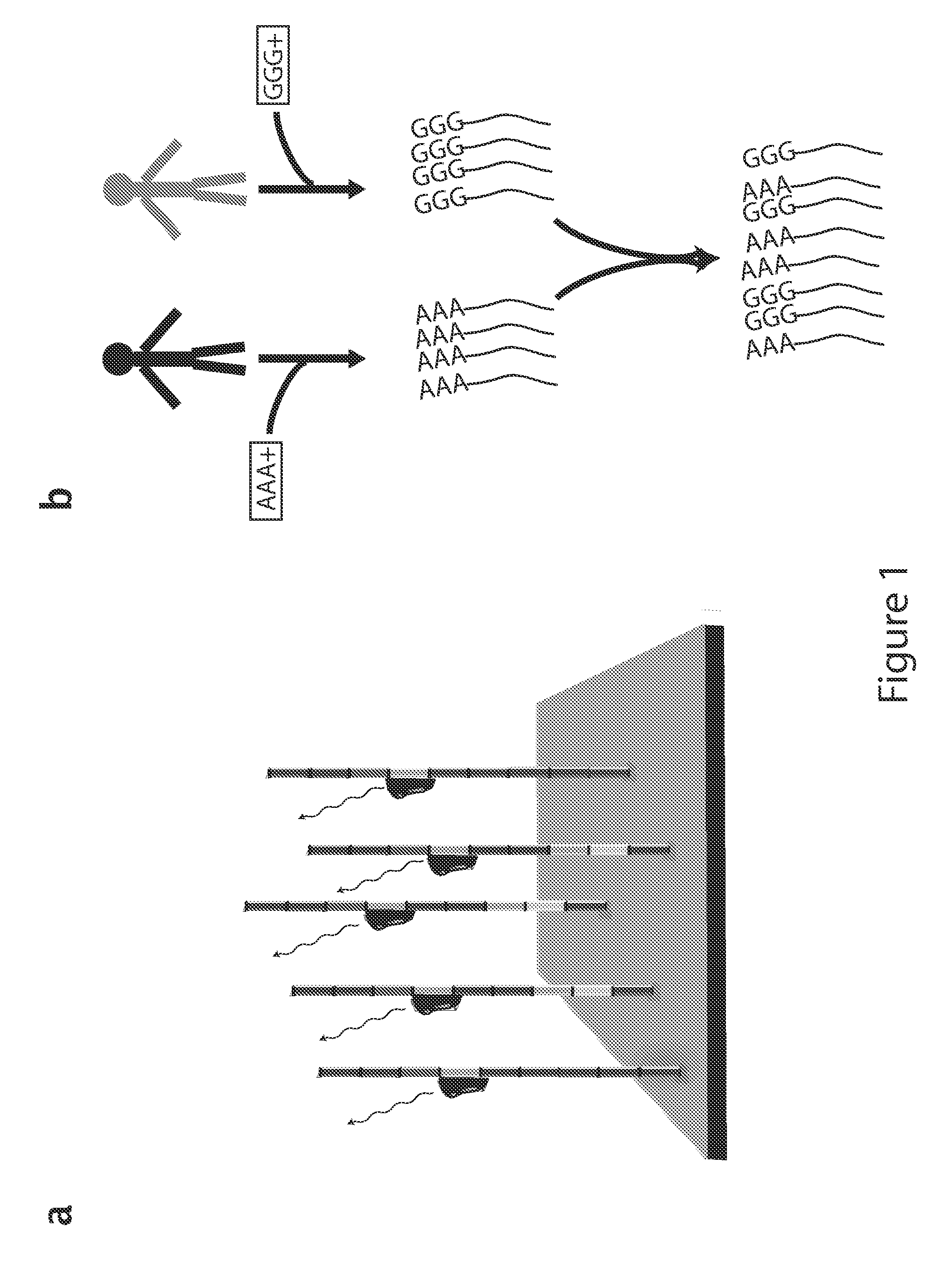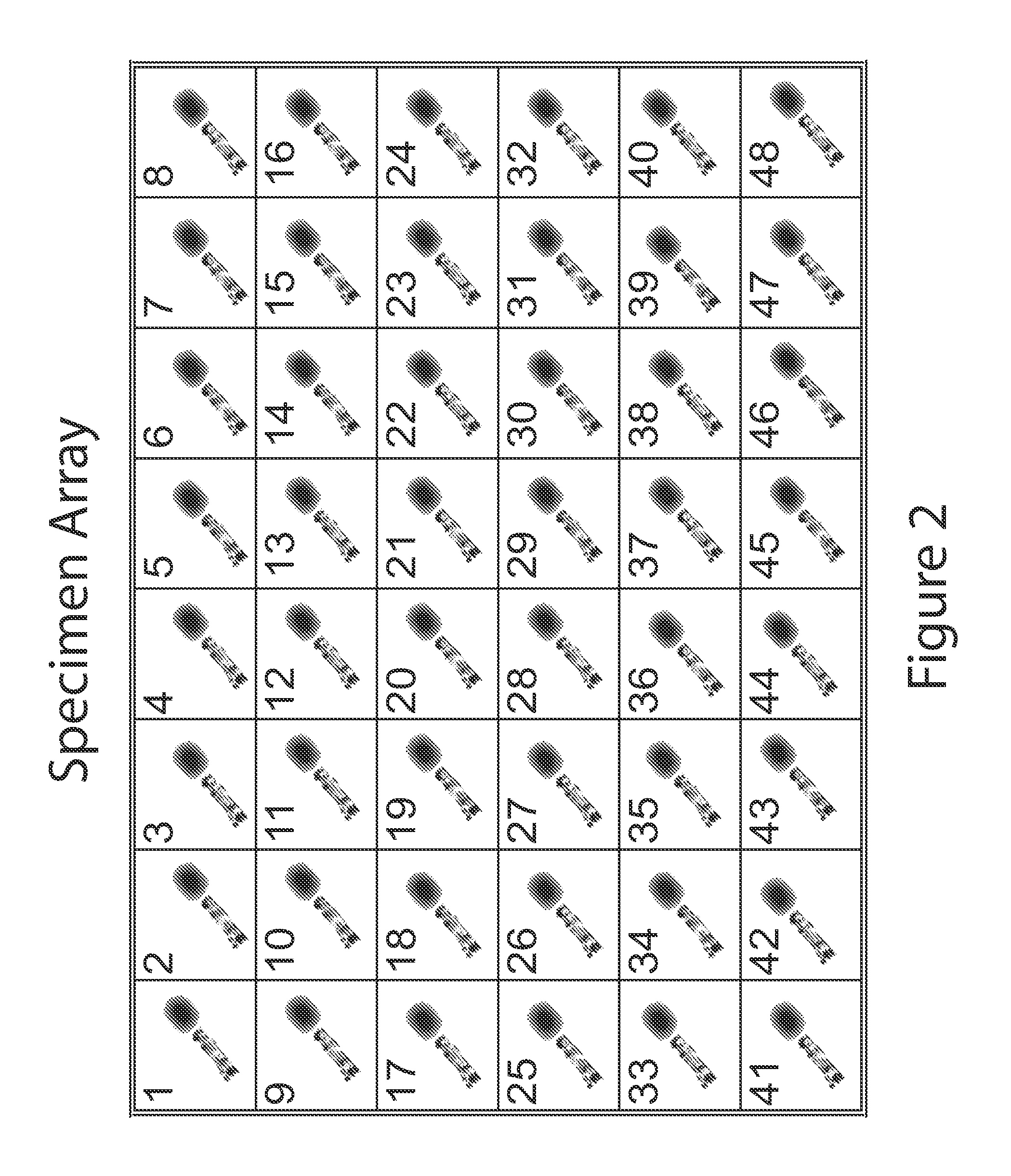Harnessing high throughput sequencing for multiplexed specimen analysis
a high-throughput, specimen technology, applied in the direction of biochemistry apparatus and processes, instruments, library member identification, etc., can solve the problems of cumbersome synthesis and ligation of a large number of dna fragments, inability to associate, and high cost of dedicating a run to each specimen, so as to achieve high confiden
- Summary
- Abstract
- Description
- Claims
- Application Information
AI Technical Summary
Benefits of technology
Problems solved by technology
Method used
Image
Examples
example 1
[0071] [n≡r1(mod5)n≡r2(mod8)]
[0072]For each pooling rule a destination plate is created, which accommodates the pools that are created based upon the rule. More generally, each pooling rule n has the following format:
n=r(mod x) (2)
[0073]which brings aliquots of the r, r+x, r+2x, . . . specimens to the rth-well in the corresponding destination plate, where 0<r≦x, and x is called the pooling window. Let the pooling group be a set of all pools that are created according to a given x pooling window. According to one embodiment, the inventive method employs a system of W pooling rules:
[n≡r1(modx1)n≡r2(modx2)⋮n≡rw(modxw)](3)
[0074]The total number of the wells in the pooling groups gives the overall number of pools:
T=x1+x2+ . . . +xw. (4)
[0075]For instance, in the example above we see that T=5+8=13.
[0076]This representation of the pooling scheme by the pooling matrix, M, has the following characteristics. Referring to FIG. 3B, for example, first, the rows of the matrix are partitioned to...
PUM
| Property | Measurement | Unit |
|---|---|---|
| Threshold limit | aaaaa | aaaaa |
Abstract
Description
Claims
Application Information
 Login to View More
Login to View More - R&D
- Intellectual Property
- Life Sciences
- Materials
- Tech Scout
- Unparalleled Data Quality
- Higher Quality Content
- 60% Fewer Hallucinations
Browse by: Latest US Patents, China's latest patents, Technical Efficacy Thesaurus, Application Domain, Technology Topic, Popular Technical Reports.
© 2025 PatSnap. All rights reserved.Legal|Privacy policy|Modern Slavery Act Transparency Statement|Sitemap|About US| Contact US: help@patsnap.com



